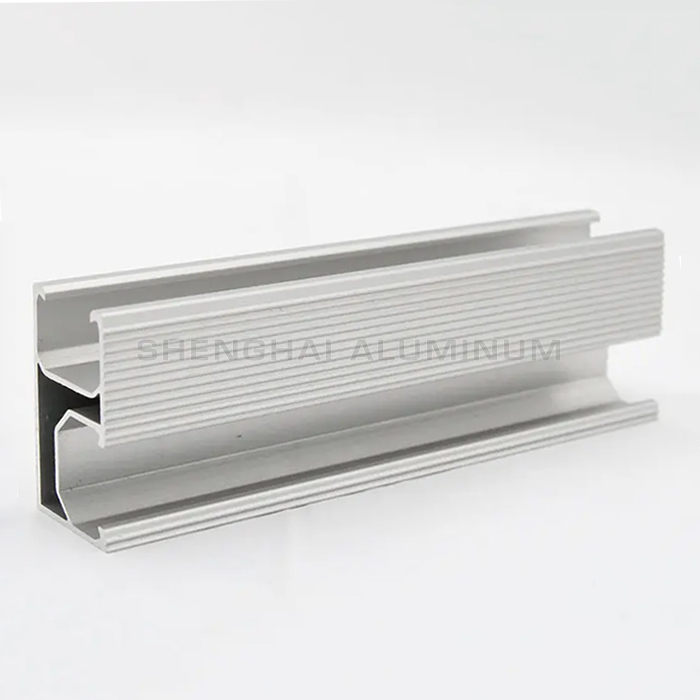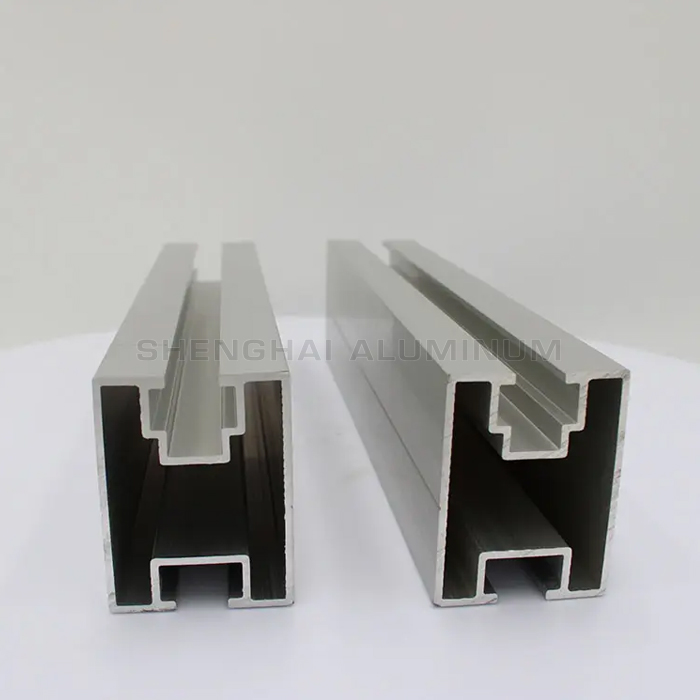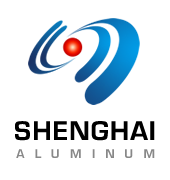The photovoltaic industry will use a lot of aluminum alloy profiles. These aluminum profiles mainly play the role of protection and support. Let’s take a look at what photovoltaic aluminum profiles are and their functions.
1. Solar frame, also called photovoltaic aluminum frame, is mainly used to protect the glass of photovoltaic cells, fix and seal the panels, enhance the strength of components, and prolong the service life. The cross-section of the photovoltaic frame is L-shaped with a notch, and there is a cavity for installing corner code connectors. Most solar frames are made of 6005 aluminum alloy, and the surface is anodized silver, white or black.

2. Photovoltaic support is a special support designed to place, fix and support solar panels during the construction of photovoltaic power plants. The solar photovoltaic bracket is made of aluminum alloy, carbon steel, stainless steel, etc. The surface requirements of the photovoltaic support are not as high as the photovoltaic frame. The aluminum alloy support is generally anodized, and the surface of the steel support is galvanized to prevent outdoor anodized and corrosion.
According to the different movable performances, photovoltaic support can be divided into fixed, adjustable, and tracking photovoltaic support. The stability, load and safety performance requirements of photovoltaic support are relatively high.
3. Photovoltaic briquetting block, also called solar panel briquetting block, plays an auxiliary role as a bracket to install and fix the solar panels. Photovoltaic briquettes are divided into side briquettes and middle briquettes.
The middle pressing block is used as the connection between two adjacent battery panels, while the side pressing block is used as the connection between the photovoltaic panel and the support. In some double-glass frameless modules, the pressing block directly clamps the photovoltaic glass and then connects to the bracket. The briquette material is generally 6063 aluminum alloy, and the surface is anodized.

4. Connector profiles: Connector profiles are used to connect different components and components, such as beams or mounting rails for connecting solar mounting systems. These profiles generally have strong joining capabilities and durability.
5. Heat dissipation profile: The solar panel will generate a certain amount of heat during the working process, and the heat dissipation profile is used to effectively dissipate the heat to prevent the impact of overheating on the solar panel. These profiles generally have good heat dissipation and thermal conductivity properties.
These are just some common types of aluminum profiles for photovoltaics. In fact, various other profiles can be selected according to specific needs and applications. Factors such as its quality, weather resistance, corrosion resistance, and ease of installation should be considered when selecting and using aluminum profiles.

